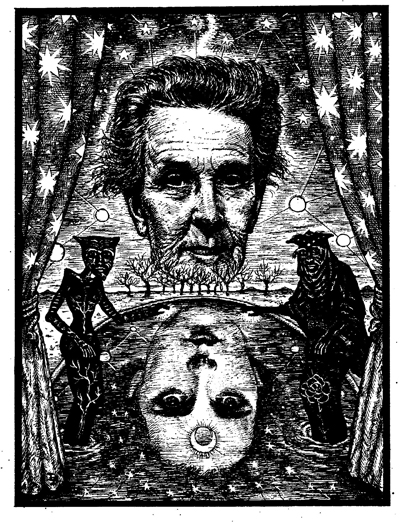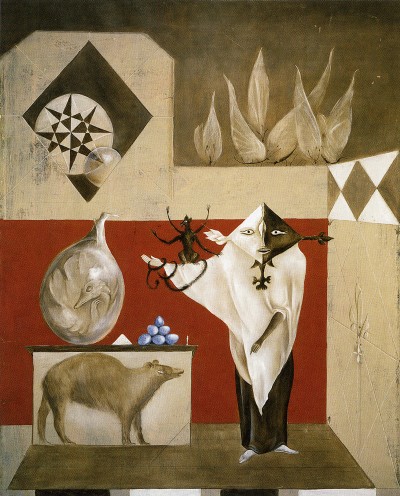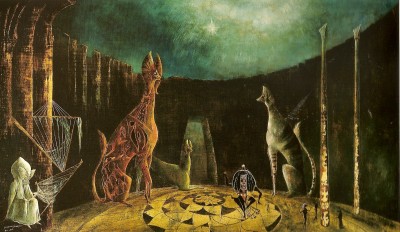
Fantastic pen and ink double portrait by Hilus Anendorf
Leonora Carrington lived a life as surreal and fantastical as the images she painted. The last of the first generation of Surrealists, she consorted with the full pantheon of greats, from Dali to Picasso, and was hailed as “Mexico’s greatest living artist” before her death 94. Despite her storied career as bohemian darling, wild muse and prolific creator of paintings, books, sculpture and theater, she remained always humble, and resolutely uninterested in labels, or all the laurels that have been flung her way over the years.
Her approach to art was completely intuitive, stemming from the deep well of her soul, her own psychic underworld realm that she populated with fantastic beasts and mysterious figures. She disdained the overintellectualization and analysis of her work, her beliefs, her inspirations – believing fervently that the visual world she created was unnecessarily hindered by those determined to understand what it was all about. She was a provocateur, delighting in stirring up trouble amongst the staid, society types whose ilk she rejected. André Breton wrote of her in his Anthologie de l’humoir noir:
“Those respectable people who, for a dozen years, had invited her to dine in a prestigious restaurant have still not recovered from the embarrassment when they noticed that, while continuing to take part in the conversation, she had taken off her shoes and meticulously covered her feet in mustard.”

The Conjuror
All of her work is infused with this dark sense of humor and mischief, particularly her writing. In her only novel, The Hearing Trumpet, she envisions herself as a wizened crone – the 92 year old Marian Leatherby, a deaf and toothless “drooling sack of decomposing flesh” who is cast-off by callous relatives to a sanatorium for the elderly. It is here that her life truly begins, when she finds her kind: a coven of witch-sisters who help her discover and unleash her mediumistic talents.
Carrington once said, “I wanted to appear like an old lady so I could poke fun at sinister things.” As a young woman growing up in her stultifyingly proper Lancashire family estate, she railed against convention, and was booted out of multiple boarding schools. In her story “The Debutante”, she recounts her fantasy of dressing up a hyena in her coming-out dress, and sending the wild thing to her debutante’s ball in her stead. Allowed at last to attend art school, she horrified her family by running off with a married man twice her age, who happened to be Max Ernst. The romance was tragic, and ill-fated – doomed by the Nazi invasion of France and their subsequent incarceration of her lover. After a nervous breakdown, which caused her to be thrown into an asylum, she fled Europe for Mexico, where she settled and flourished until her death.

“We went down into the silent garden. Dawn is the time when nothing breathes, the hour of silence. Everything is transfixed, only the light moves.”
— Leonora Carrington





